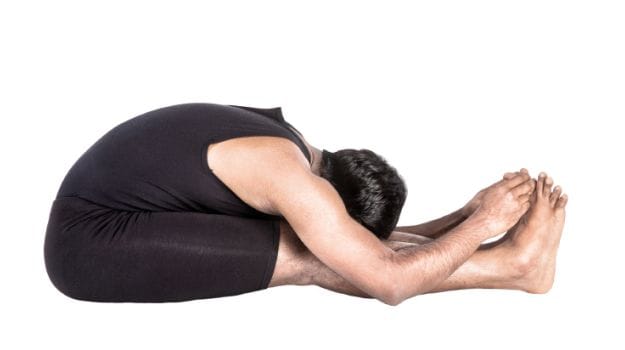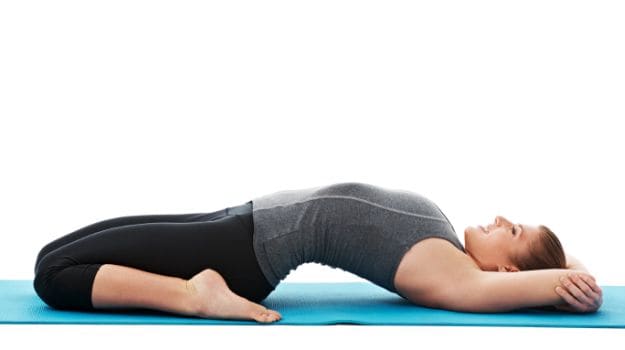“Yoga is a mirror to look at ourselves from within.” - B.K.S IyengarThe benefits of yoga are not only restricted to be perceived at body level. Yoga offers us all rounded fitness physically, mentally and spiritually. The origins of yoga are considered to date back to the pre-Vedic Indian traditions. The literal meaning of the Sanskrit word ‘yoga’ is “to add”, “to join”, “to unite” or “to attach” from the root. Modern life has brought many benefits but also many hazards. For every sort of challenge (physical or mental), a different type of yoga is available to eliminate and reduce its effects.Among the numerous branches of yoga, recently the Google Doodle celebrated one particular type of yoga which can be practiced by all and is known as Iyengar yoga. Named after Yogacharya B.K.S. Iyengar (Bellur Krishnamachar Sundararaja Iyengar), it is one of the oldest forms of yoga. The Google Doodle on 14th December marked the 97th birth anniversary of the Indian yoga guru. The interactive doodle showed the yoga teacher in some of his famous poses within Google's logo.
Iyengar Yoga is a form of Hatha yoga which lays emphasis on precision and alignment in all postures (asana). B.K.S Iyengar has systematized over 200 classical yoga asanas and 14 different types of pranayamas (breathe control). Many of the pranayamas have variations to them and they range from basic to advance. The unique feature of this yoga is that it includes the use of various props which help the practitioner to achieve perfection in the postures.Iyengar yoga became famous for adding “yoga props” to the yoga session. These props range from belts, cushions, sandbags, blocks, wooden gadgets, blankets, ropes, etc. and also help to minimize the risk of strain or injury. This is the feature which enables person of any age group to access this type of yoga.The AsanasFollowing are some easy and interesting Iyengar Yoga asanas with the help of props:-1. Paripurna Navasana
This pose means full boat. In Iyengar yoga this pose can be done by the beginners with the help of props like chair or a block.This posture helps in - 2. Paschimottasna
2. Paschimottasna
In Paschimottanasana, you are folded upon yourself into a naturally introverted state. This pose requires patience and discipline. This asana means intense stretch of the waist. This posture can be achieved with the help of cushions.This posture helps in - 3. Viparita Dandasana
3. Viparita Dandasana
This asana is the combination of Sirs asana (headstand) and Urdhva Dhanurasana (upward facing bow pose). This pose can be achieved with the help of props like mats, chairs and cushions.This posture helps in - 4. Bharadvajasana
4. Bharadvajasana
This posture in Iyengar yoga is performed on a chair. It helps in - 5. Supta Virasana
5. Supta Virasana
Supta Virasana is a reclined version of virasana where the upper body reclines backwards, so that the back rests on the floor. The arms rest on the floor to either side of the trunk, with the palms facing up. This pose in Iyengar can be done with the help of cushions or blankets kept underneath the practitioner.The major benefits of this asana are - Apart from the above, there are numerous asanas practices with props in Iyengar yoga. Each asana has its own benefits which help to treat physical and mental conditions.How is Iyengar Yoga different from other forms?The Iyengar yoga differs from the other forms of yoga in the following ways. The postures are more complex as practitioners hold the asanas for a longer period of time. Only after mastering asanas, one can move forward to the pranayama. In some asanas, props are used for the effective achievement of postures. According to the principles of Iyengar yoga, by varying the sequence the effect of asana can be intensified.
Apart from the above, there are numerous asanas practices with props in Iyengar yoga. Each asana has its own benefits which help to treat physical and mental conditions.How is Iyengar Yoga different from other forms?The Iyengar yoga differs from the other forms of yoga in the following ways. The postures are more complex as practitioners hold the asanas for a longer period of time. Only after mastering asanas, one can move forward to the pranayama. In some asanas, props are used for the effective achievement of postures. According to the principles of Iyengar yoga, by varying the sequence the effect of asana can be intensified.
Iyengar Yoga is a form of Hatha yoga which lays emphasis on precision and alignment in all postures (asana). B.K.S Iyengar has systematized over 200 classical yoga asanas and 14 different types of pranayamas (breathe control). Many of the pranayamas have variations to them and they range from basic to advance. The unique feature of this yoga is that it includes the use of various props which help the practitioner to achieve perfection in the postures.Iyengar yoga became famous for adding “yoga props” to the yoga session. These props range from belts, cushions, sandbags, blocks, wooden gadgets, blankets, ropes, etc. and also help to minimize the risk of strain or injury. This is the feature which enables person of any age group to access this type of yoga.The AsanasFollowing are some easy and interesting Iyengar Yoga asanas with the help of props:-1. Paripurna Navasana
This pose means full boat. In Iyengar yoga this pose can be done by the beginners with the help of props like chair or a block.This posture helps in -
- Strengthening the core muscles of the abdomen and hip flexors
- Improving alignment by stretching the spine
- Strengthening the lower back muscles
- Toning the small and large intestines
- Improving digestion
- Stimulating the kidneys, thyroid and prostate glands, and intestines

In Paschimottanasana, you are folded upon yourself into a naturally introverted state. This pose requires patience and discipline. This asana means intense stretch of the waist. This posture can be achieved with the help of cushions.This posture helps in -
- Calms the brain and helps relieve stress and mild depression
- Stretches the spine, shoulders, hamstrings
- Stimulates the liver, kidneys, ovaries, and uterus
- Improves digestion
- Helps relieve the symptoms of menopause and menstrual discomfort
- Soothes headache and anxiety and reduces fatigue
- Therapeutic for high blood pressure, infertility, insomnia, and sinusitis

This asana is the combination of Sirs asana (headstand) and Urdhva Dhanurasana (upward facing bow pose). This pose can be achieved with the help of props like mats, chairs and cushions.This posture helps in -
- Reduces abdominal fat
- Strengthens shoulder muscles
- Tones internal organs
- Revitalizes central nervous system

This posture in Iyengar yoga is performed on a chair. It helps in -
- Stretches the spine, shoulders, and hips
- Massages the abdominal organs
- Relieves lower backache, neck pain, and sciatica
- Helps relieve stress
- Improves digestion
- Especially good in the second trimester of pregnancy for strengthening the lower back
- Therapeutic for carpal tunnel syndrome
- Increased flexibility to the back, knees and shoulders

Supta Virasana is a reclined version of virasana where the upper body reclines backwards, so that the back rests on the floor. The arms rest on the floor to either side of the trunk, with the palms facing up. This pose in Iyengar can be done with the help of cushions or blankets kept underneath the practitioner.The major benefits of this asana are -
- Stretches the abdomen, thighs and deep hip flexors, knees, and ankles
- Strengthens the arches
- Relieves tired legs
- Improves digestion
- Helps relieves the symptoms of menstrual pain

Advertisement







